As a nature and wildlife photographer, I am always seeking new adventures and opportunities to capture the beauty of nature through my lens. Recently, I had the privilege of photographing the American White Pelican at Brookville Lake in Indiana. It was an unexpected experience that, once again, left me in awe of these magnificent birds.
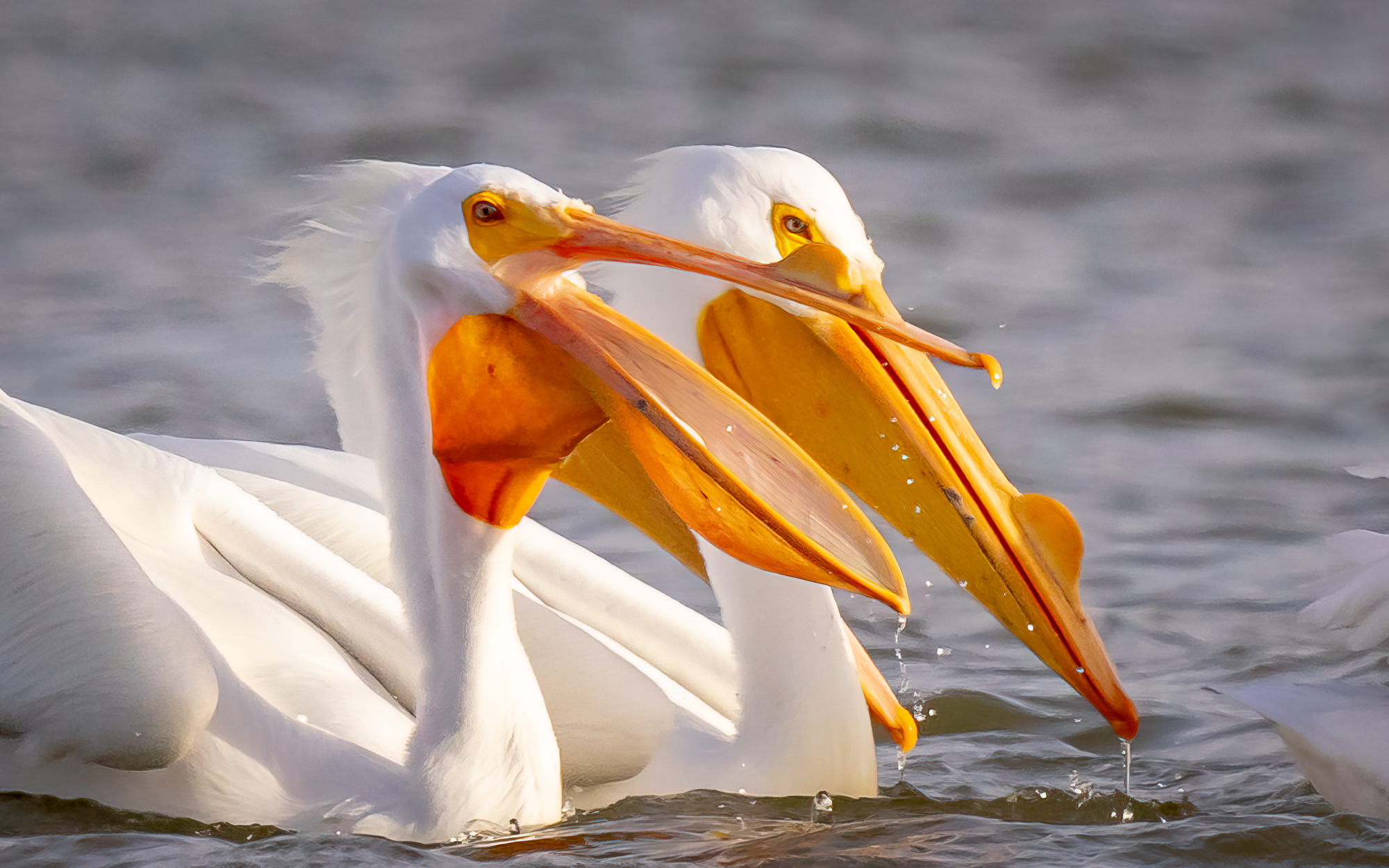
The American White Pelican is a large, striking bird known for its pure white plumage, black flight feathers, and distinctive orange bill. They are one of the largest birds in North America, with a wingspan of up to nine feet, and weighing as much as 30 pounds. Do to their excessive buoyancy compared to their Brown Pelican cousins, the White Pelican cannot dive from the air to catch fish. Rather, they have developed a unique feeding behavior, where they work together in groups to herd fish into shallow water and then scoop them up in their large bills.
I first encounter the American White Pelican when photographing the Nygren Wetland Preserve in Rockton, Illinois back in 2011. Historically, the White Pelican had always migrated north and south each year, following routes west of the Mississippi River. However, rumor has it, a few years prior to 2011, a bad storm forced the White Pelican to shift its migration pattern eastward.
In the spring of 2011, after much research and observation, I was lucky enough to be at Nygren Wetland when the mass of White Pelicans migrating north landed for a day’s rest. Over the course of nine hours, I was able to witness and photograph thousands of pelicans landing in the wetland and fishing for their evening dinner. You can read articles from that adventure at American White Pelicans Migrate North and White Pelicans Galore.
One thing you may wonder when looking at my photos of the American White Pelican is, “what is the growth on the top of the pelican’s bill.” That blade is called a nuptial turbercle. A fibrous plate, unique to the bird, with both males and females growing them. The turbecles develop prior to the mating season at the same time the bird’s orange and yellow coloring becomes more prominent. When the mating season is over, the turbecles drop off. Nothing scientific here and based purely on observation, but I believe that as a White Pelican ages, their nuptial turbecles become more prominent and ornate.
Fast forward to the present, I was researching Sandhill Cranes at Brookville Lake when I heard rumors of American White Pelican sightings near the Quakertown Beach area. I drove over the very next day and was excited to see there were, in fact, around 50 American White Pelicans wintering over there. It’s was such a thrill to see and photograph these magnificent birds again.
Like all of my photo adventures, I came prepared with my Sony A7ii mirrorless, full-frame camera and the Sony 200-600mm zoom lens. One of the benefits of using a mirrorless camera is that it is smaller and lighter than a traditional DSLR camera, making it easier for me to carry around all day. The Sony A7ii is also known for its excellent image quality and low-light performance, which comes in handy during late afternoon shoots. The Sony 200-600mm zoom lens was the perfect choice for photographing the pelicans, as it allowed me to get close-up shots without disturbing them.
One of the challenges of photographing wildlife is that you have to be patient. You can’t force the animals to do anything, so you have to wait for the right moment to capture the perfect shot. I spent several hours sitting on Quakertown Beach, observing the American White Pelicans, studying their behavior, and waiting for the right moment to press the shutter button.
I also always have to be mindful of my surroundings. Wildlife photography requires a certain level of stealth, as I don’t want to startle the animals, disrupt their natural behavior, or stress them in any way. I made sure to move slowly and quietly, keeping a safe distance from the pelicans while still getting the shots I wanted.
Overall, my adventure photographing the American White Pelican at Brookville Lake was an incredible experience. I’m grateful to have had the opportunity to, once again, capture the beauty of the White Pelicans on camera, and I look forward to the next time I’m lucky enough to cross paths with them.
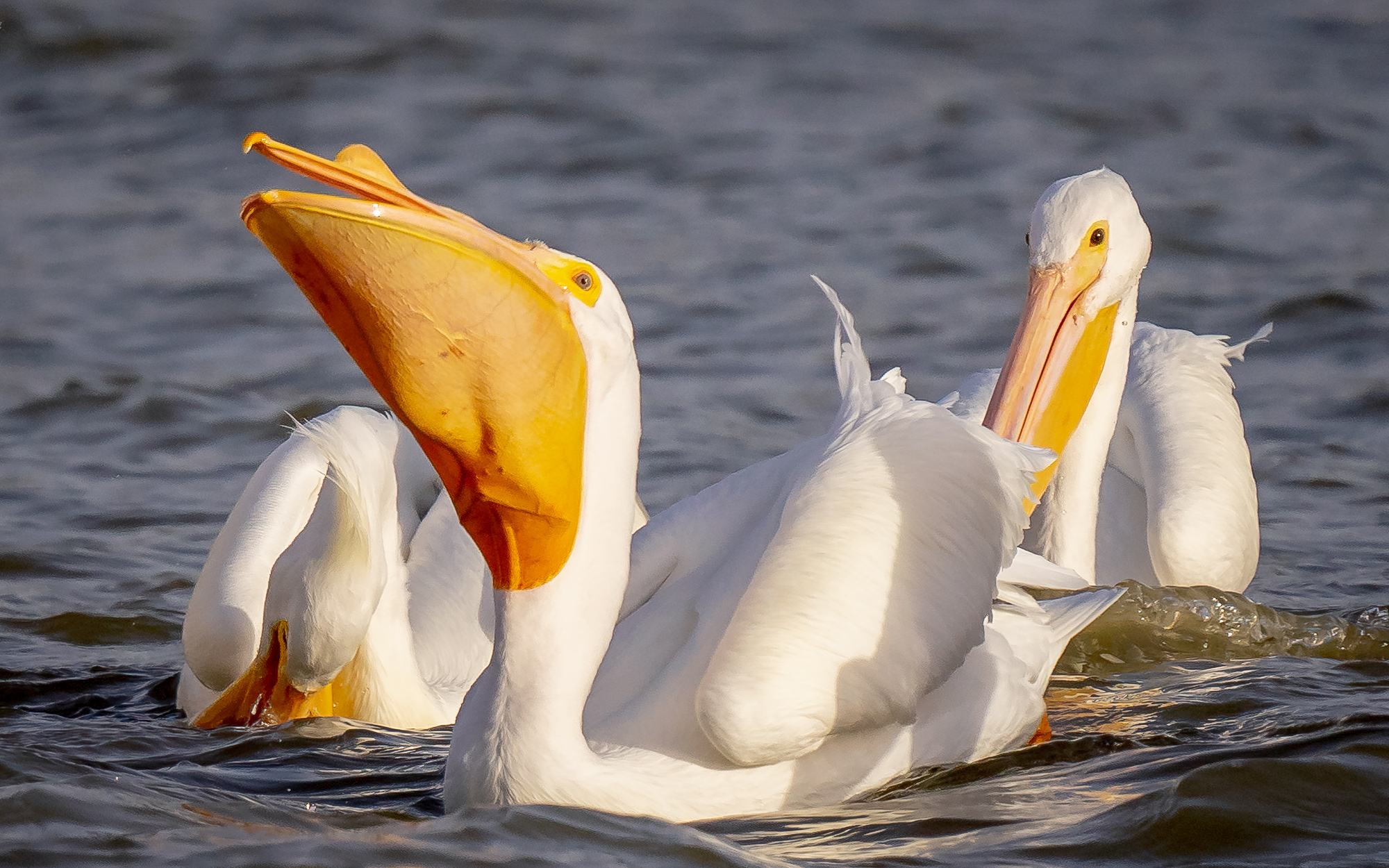
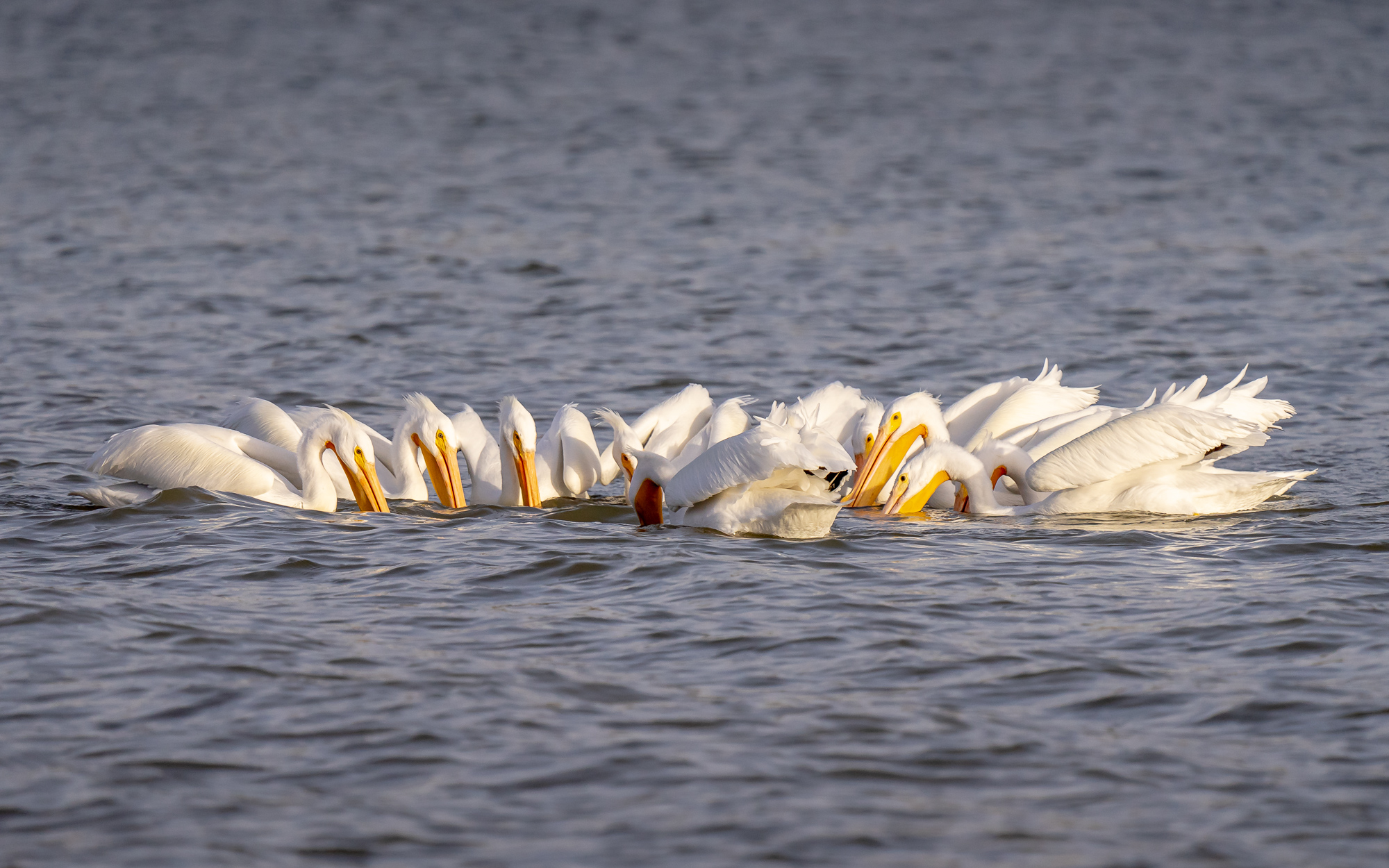
Shot at 600mm. Sony a7ii. 1/2000 at f/7.1, ISO 800.
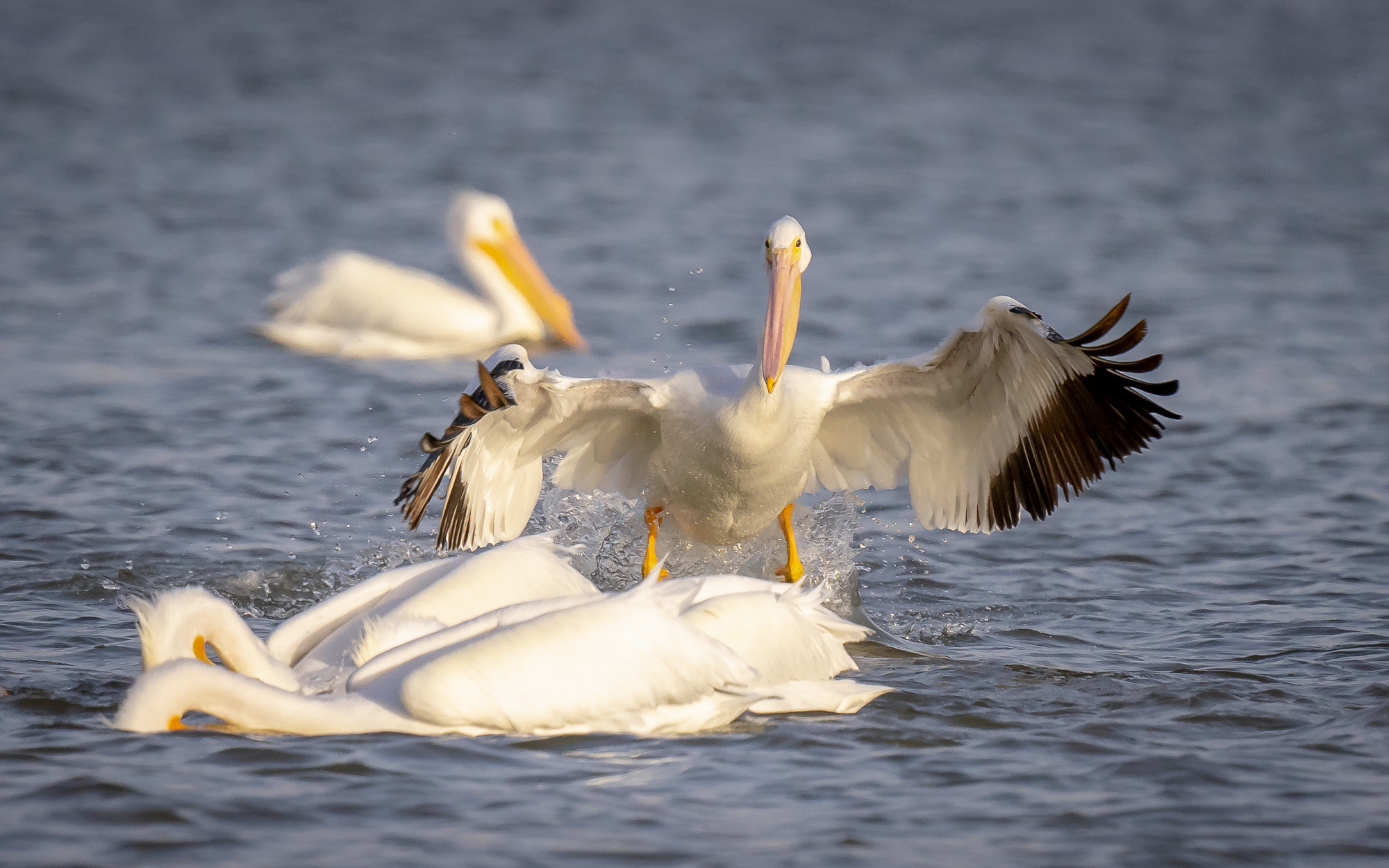
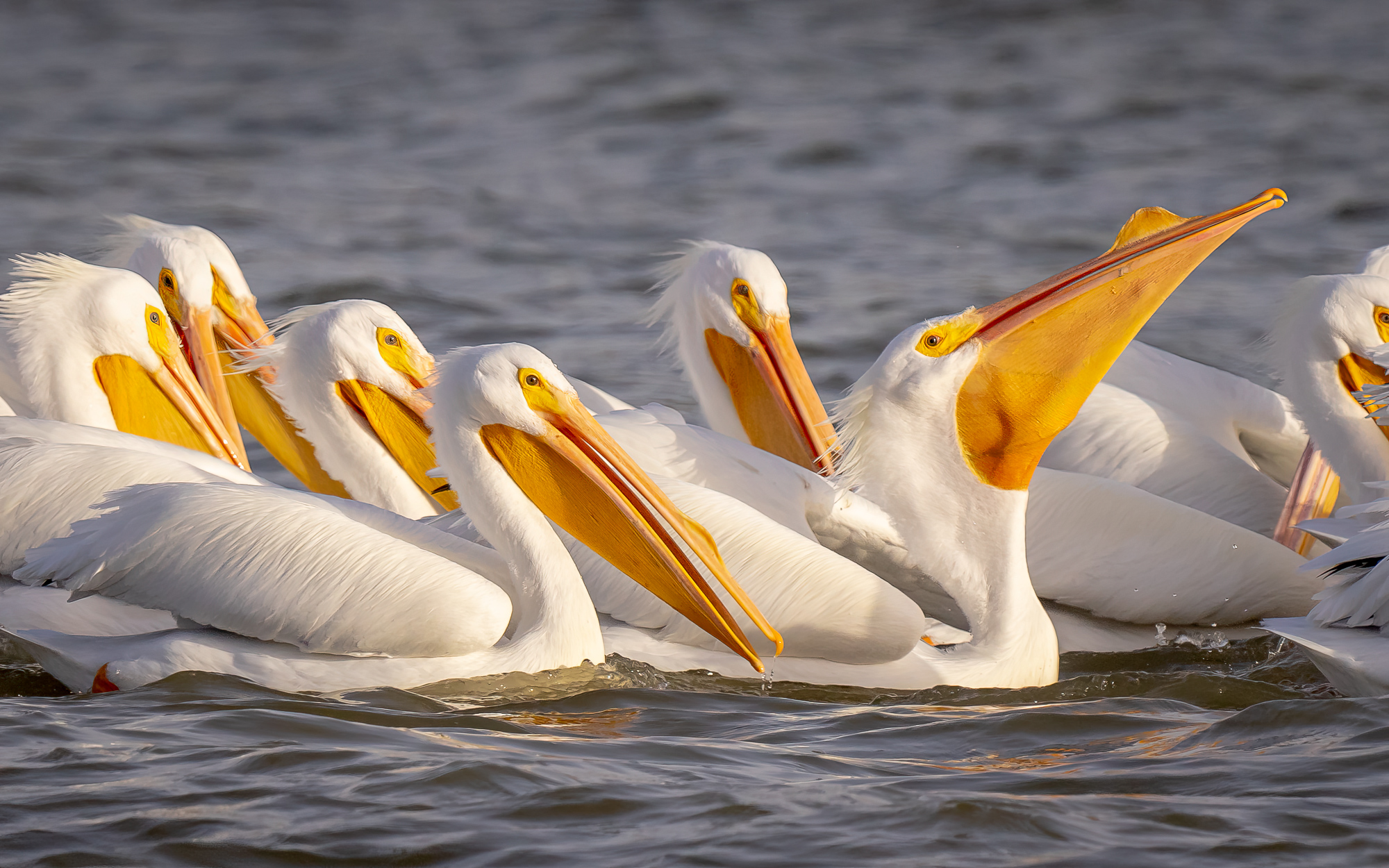
If you would like to know more about the American White Pelican, the photo equipment or techniques I use, or just say hello, you can do that on my blog here. I’d love to hear from you. If you would like to see more of my photos of the White Pelicans, follow this link to my photo galleries. https://wesgibsonphoto.com/white-pelicans
